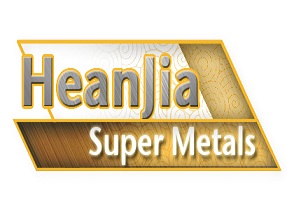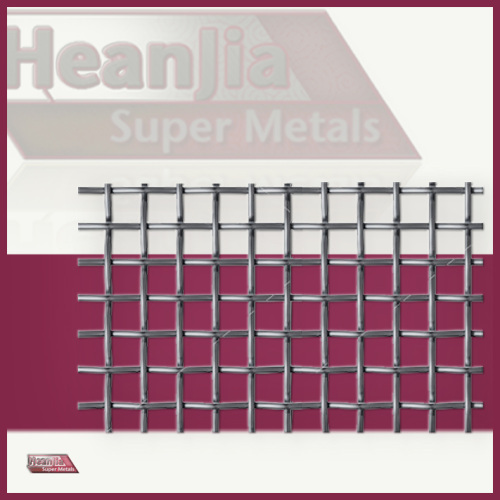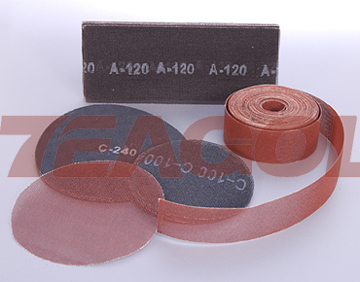
|
Heanjia Super-metals Co., Ltd.
|
Hastelloy X Mesh Screen
| Payment Terms: | T/T,L/C,D/A,D/P,WU |
| Place of Origin: | Hebei, China (Mainland) |
|
|
|
| Add to My Favorites | |
| HiSupplier Escrow |
Product Detail
Hastelloy X alloy wire mesh/screen contains Cr, Mo, It has the ability to resistant oxidation and corrosion .Its melting point is 2300-2470℃.
Hastelloy X Mesh/Screen is a nickel-chromium-iron-molybdenum superalloy with outstanding high temperature strength, oxidation resistance, and fabricability. Hastelloy X Mesh/Screen's oxidation resistance is excellent up to 2200° F. Hastelloy X Mesh/Screen has also been found to be exceptionally resistant to stress-corrosion cracking in petrochemical applications. Matrix stiffening provided by the molybdenum content results in high strength in a solid-solution alloy having good fabrication characteristics. Although it is primarily noted for heat and oxidation resistance, Hastelloy X Meshalso has good resistance to chloride stress-corrosion cracking, carburization, and excellent resistance to reducing or carburizing atmospheres.
Characteristics of Hastelloy X Mesh/Screen
Outstanding oxidation resistance through 2000° FCharacteristics of Hastelloy X Mesh/Screen
Resistant to carburization and nitriding
Excellent high temperature strength
Good resistance to chloride stress-corrosion cracking
Hastelloy X Mesh/Screen Applications
Gas turbines
Petrochemical industry
Industrial furnaces
Heat treating equipment
Nuclear engineering
Jet engine combustion chambers
Aircraft cabin heaters
Turbine exhaust components
Hastelloy X Mesh/Screen is one of the most widely used nickel base superalloys for gas turbine engine combustion zone components such as transition ducts, combustor cans, spray bars and flame holders as well as in afterburners, tailpipes and cabin heaters. It is recommended for use in industrial furnace applications because it has unusual resistance to oxidizing, reducing and neutral atmospheres. Hastelloy X is also used in the chemical process industry for retorts, muffles, catalysts support grids, furnace baffles, tubing for pyrolysis operations and flash drier components.
Fabrication with Hastelloy X Mesh/Screen
Chemical Composition of Hastelloy X
Element | Min | Max |
Molybdenum | 8.00 | 10.0 |
Chromium | 20.5 | 23.0 |
Iron | 17.0 | 20.0 |
Tungsten | 0.20 | 1.00 |
Cobalt | 0.50 | 2.50 |
0.05 | 0.015 | |
Silicon | -- | 1.00 |
Manganese | -- | 1.00 |
Boron | -- | 0.01 |
Phosphorus | -- | 0.04 |
Sulfur | -- | 0.03 |
Nickel | Remainder | |
Physical Properties of Hastelloy X
Physical Properties | °F | British Units | °C | Metric Units |
Density | 72 | 0.297 lb./cubic in. | 22 | 8.22 g/cubic cm. |
Melting Range | 2300- 2470 | 1260- 1355 | ||
Electrical Resistivity | 72 | 46.6 microhm-in. | 22 | 1.18 microhm-m |
Mean Coefficient of Thermal Expansion | 79-200 | 7.7 microin./in.-°F | 26-100 | 13.8 X 10(-6)m/m-K |
79-1000 | 8.4 microin./in.-°F | 26-500 | 14.9 X 10(-6)m/m-K | |
79-1200 | 8.6 microin./in.-°F | 26-600 | 15.3 X 10(-6)m/m-K | |
79-1350 | 8.8 microin./in.-°F | 26-700 | 15.7 X 10(-6)m/m-K | |
79-1500 | 8.9 microin./in.-°F | 26-800 | 16.0 X 10(-6)m/m-K | |
76-1650 | 9.1 microin./in.-°F | 26-900 | 16.3 X 10(-6)m/m-K | |
79-1800 | 9.2 microin./in.-°F | 26-1000 | 16.6 X 10(-6)m/m-K | |
Thermal Conductivity | 70 | 63 Btu-in/ft²-hr-°F | 20 | 9.7* W/m-K |
200 | 76 Btu-in/ft²-hr-°F | 100 | 11.1 W/m-K | |
500 | 98 Btu-in/ft²-hr-°F | 300 | 14.7 W/m-K | |
1100 | 144 Btu-in/ft²-hr-°F | 600 | 20.6 W/m-K | |
1300 | 159 Btu-in/ft²-hr-°F | 700 | 22.8 W/m-K | |
1500 | 174 Btu-in/ft²-hr-°F | 800 | 25.0 W/m-K | |
1700 | 189 Btu-in/ft²-hr-°F | 900 | 27.4* W/m-K | |
Poisson's Ratio | -78 22 | 0.328 0.320 | -108 72 | 0.328 0.320 |
Magnetic Permeability | Room | <1.002 at 200 oersteds (15,900 A/m) | ||
Mesh Weaving Method
Perforated Mesh |
Dutch Twill Weave Cloth |
Dutch Plain Weave |
Reverse Dutch Weave Cloth |
5-heddle Weave Mesh |
Cross twill weave |
Didn't find what you're looking for?
Post Buying Lead or contact
HiSupplier Customer Service Center
for help!
Related Search
Mesh Screen
Screen Mesh
Screen Wire Mesh
Fine Mesh Screen
Wire Mesh Screen
Window Screen Mesh
More>>


















